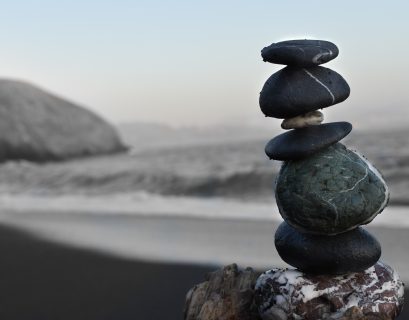As if in a close-up, the art and education space CLOSE UP in the Contemporary Art Collection at the Städel Museum is currently dedicated to the thematic focus of Art & Politics. In May and June, CLOSE UP will for the first time become the stage for a lively exchange: in the three-part series of talks “CLOSE UP TALKS: How Political is Art?”, visitors are invited to approach one of the exhibited works at a time. The moderator and philosopher Michel Friedman talks to the respective artists of the works as well as other experts from different fields. Together they will search for questions, answers and opinions in order to approach the work from different perspectives: How do we deal with images of terror? What role can painting play? How does the artist relate to his work?
Works of art not only have an aesthetic value, they are also always embedded in political and social contexts: a reflection of the respective reality of life. In the works presented in CLOSE UP by Bettina Semmer (born 1955), Armin Boehm ( born 1972) and Dierk Schmidt (born 1965), the artists deal with concrete political and historical events. Despite the different approaches, they have one thing in common: they change and expand the historical template. Thus they are more than just silent observers. They confront the viewer, make the invisible visible and show different perspectives. Their painting leaves the documentary and develops its own narrative. Semmer, Boehm and Schmidt become active storytellers themselves. Using the means of art, they – directly or indirectly – actively call on people to take a stand themselves.
“At the three events, CLOSE UP in the Sammlung Gegenwartskunst becomes a space for conversation. Each event will focus on one of the works from the Städel Museum’s collection. Visitors can not only experience how the artists themselves talk about their work on site, but also gain an additional perspective through the view of an external expert. What does a philosopher say about the aestheticisation of violence, how does a political scientist react to paintings depicting a terrorist attack? And how does a media scientist look at a work that processes a concrete event without an image? We want to discuss together and give space to different approaches to looking at art,” explain Anne Dribbisch, research assistant in the Education and Outreach Department, and Svenja Grosser, deputy director of the Contemporary Art Collection.
Tickets for the free events on site at the Städel Museum are limited and available at shop.staedelmuseum.de. In addition, in the livestream via Facebook and on the Städel Museum’s YouTube channel, all interested parties are invited to follow the talks and contribute their own perspectives.
The dates of CLOSE UP TALKS
Tuesday, 17 May 2022, 6.30 p.m.
In CLOSE UP and in livestream on Facebook and YouTube
How political is art? Painting as a contemporary witness
Michel Friedman talks to artist Bettina Semmer and political scientist Saba-Nur Cheema.
Bettina Semmer (born 1955) first selects a photographic model for her work Olympia (German Catastrophe Series) from 1985 – a press photo that went around the world. In her painting, she contrasts the cool sobriety of the photo with large abstract oil spots. Only in this way is the actual act of violence behind the photograph revealed and virtually inscribed in the picture surface.
The political scientist Saba-Nur Cheema (b. 1987) has been working on educational programmes and projects at the Anne Frank Educational Centre since 2014 and advises the German government on radicalisation prevention, among other things. She campaigns against anti-Muslim racism and is an expert in human rights education.
Thursday, 2 June 2022, 6.30 p.m.
In CLOSE UP and in livestream on Facebook and YouTube.
How political is art? Bildgewalten
Michel Friedman talks to artist Armin Boehm and philosopher Lukas Germann.
In his painting Untitled (Zhwar Kili) from 2007, Armin Boehm (born 1972) takes his cue from foreign material. He translates satellite images of an Islamist terror camp into an almost abstract painting. The oppressive place, which no longer exists today after repeated bombardments, is given an aesthetic effect by the painterly transposition. And yet the extent of the destruction resonates in the scratched layer of paint.
The philosopher Lukas Germann (born 1973) counts art and aesthetics in connection with social issues among his main research interests. His greatest passion is films outside the mainstream.
Tuesday, 14 June, 6.30 pm
In CLOSE UP and in livestream on Facebook and YouTube.
How political is art? History(s) in the image
Michel Friedman talks to the artist Dierk Schmidt and the media scientist Caja Thimm.
Dierk Schmidt (born 1965) works without a model in his triptych SIEV-X – on a case of tightened refugee policy (2001-2003): at the time, only a short press release reported on the tragic shipwreck. Only with his painting does he create a comprehensive picture of the catastrophe. For this, he uses materials such as pond or PVC foil and juxtaposes these fragile, non-artistic image carriers with the classical canvas.
Caja Thimm (born 1958) is a professor of media studies and intermediality at the University of Bonn. Her research focuses on online communication and digital democracy. She is currently working on questions of social change in connection with digitalisation and the development of artificial intelligence, among other things.
Text: Press release Städel Museum
Image: Tetyana Lux via Städel Museum





